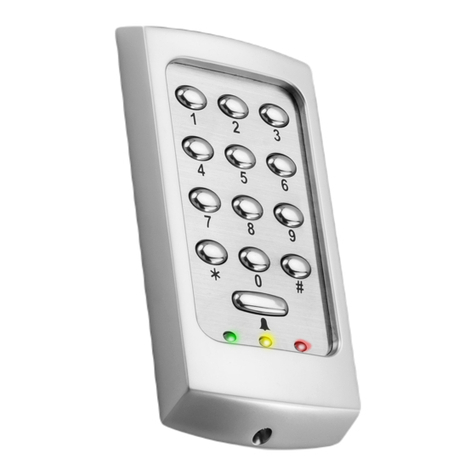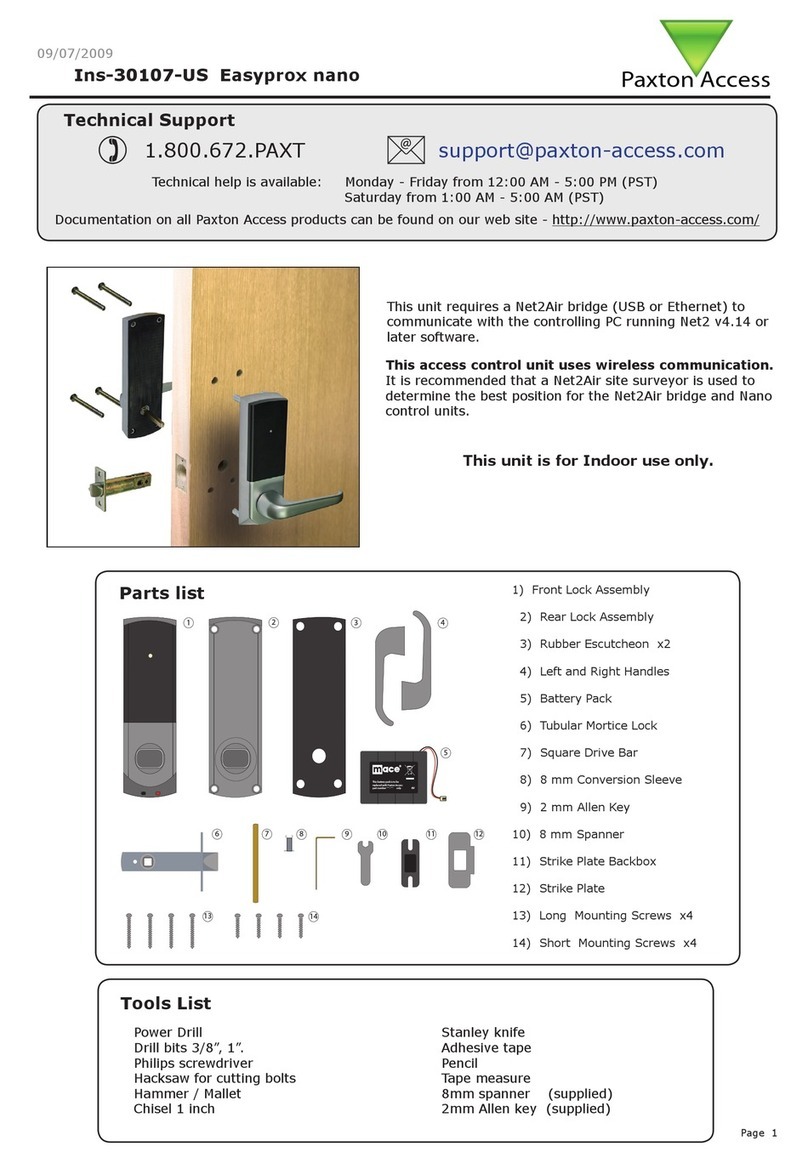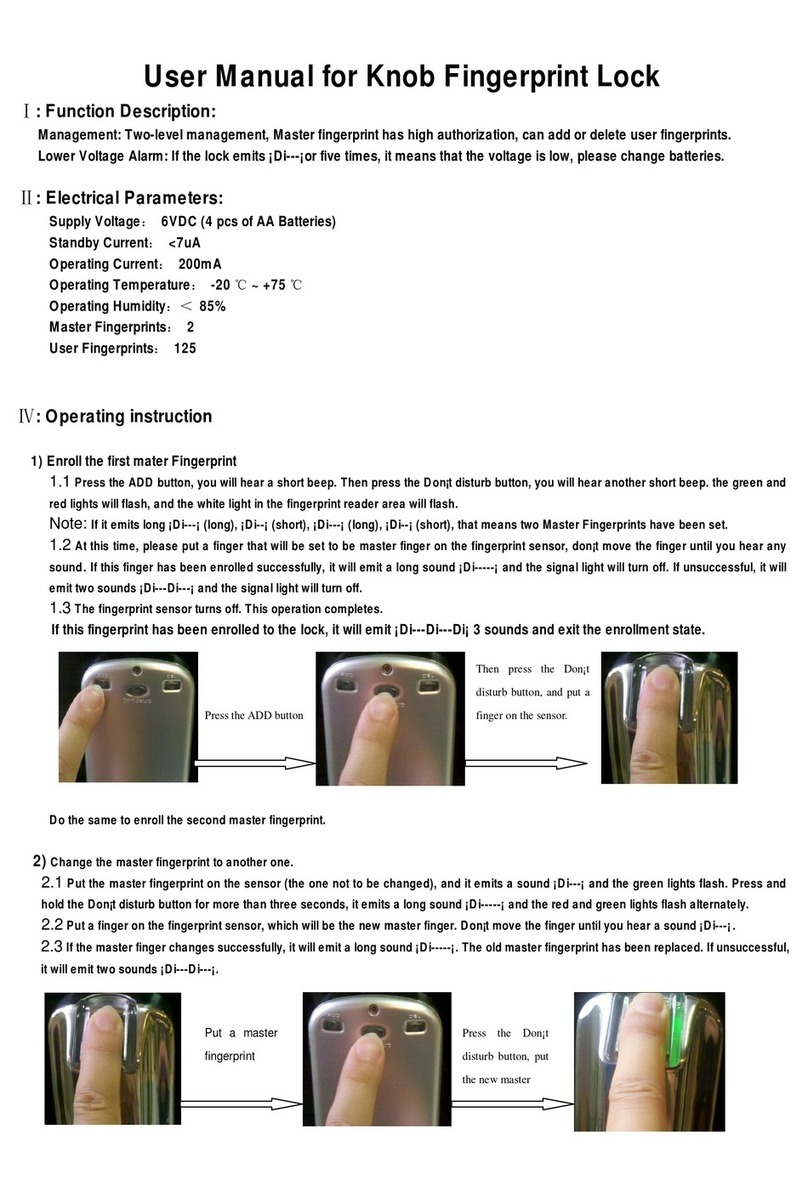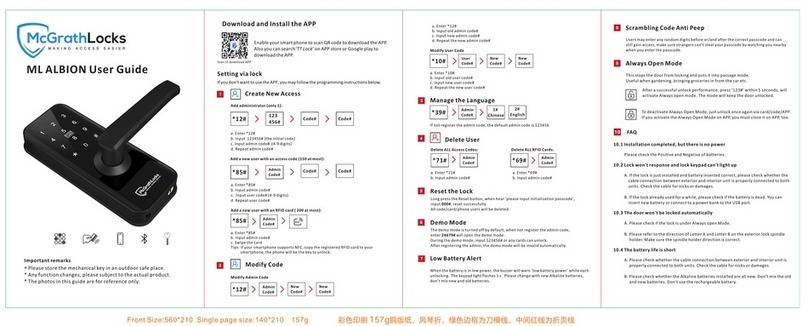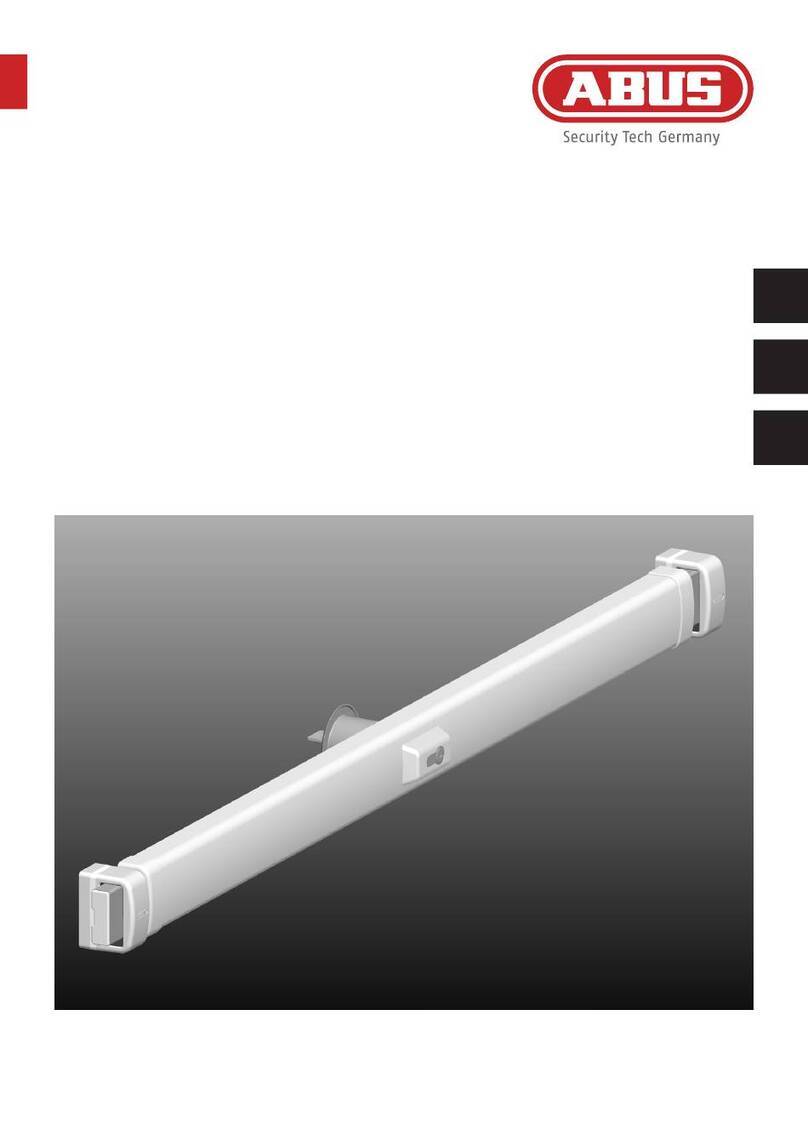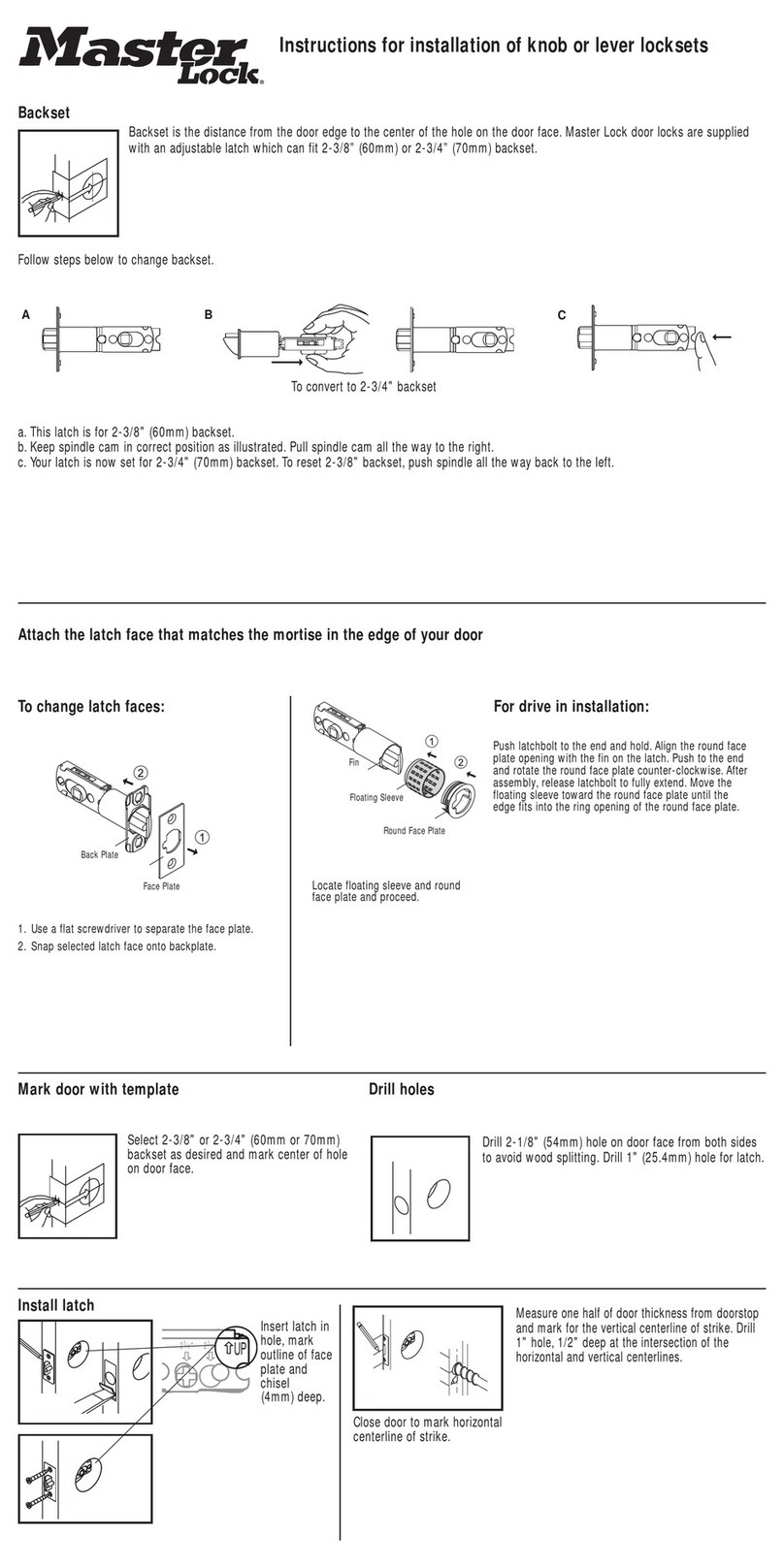Paxton Access Easyprox compact User manual

123 4
56 8 9
11 12 13
10
7
09/05/2008
Layout
Parts list
Tools List
Power Drill
Drill bits 10mm, 25mm.
8mm spanner
2mm Allen key
Philips screwdriver
Hammer / mallet
Chisel 25mm
Stanley knife
Adhesive tape, pencil, bradawl,
Tape measure
Hacksaw for cutting bolts
1) Front Lock Assembly x1
2) Rubber Escutcheon x2
3) Rear Lock Handle x1
4) Ins-30067 - Easyprox Template
5) Handle x2
6) Square Drive x1
7) Strike Plate Backbox x1
8) Strike Plate x1
9) Battery Pack x1
10) Tubular Mortice Latch x1
11) Latch Screws x4
12) Short Fixing Screws x4
13) Long Fixing Screws x4
This unit is for Internal use only.
Technical Support
Technical help is available: Monday - Friday from 07:00 - 01:00 (GMT)
Saturday from 09:00 - 13:00 (GMT)
Ins-30056 Easyprox compact
Documentation on all Paxton Access products can be found on our web site - http://www.paxton.co.uk/

Fitting the latch
Step 1
Decide on the height of the door latch from the oor and mark a height line on the edge and about 80mm across
both faces of the door. Fold the template along one of the dotted lines (right or left side) and tape it to the door
with the latch centre line positioned on the height mark. (Diagram A).
Mark the 4 x 10mm holes and 1 x 25mm holes. Remove the template and apply it to the other side of the door,
again aligning it with the height line. Mark the holes as before.
Step 2
Drill the 25mm hole on the centre line of the door edge at least 80mm deep to accept the latch.
Step 3
Drill the 4 x 10 mm holes for the xings and one 25mm hole for the square drive. To ensure accuracy you should
drill these holes from both sides of the door towards the centre. This also avoids the risk of damaging the door face
when the drill breaks through.
Step 4
Put the latch into the hole and holding it square to the door edge, draw around the faceplate. Remove the latch and
score the outline with a Stanley knife to avoid splitting the wood when chiseling. Chisel a 3.5mm rebate allowing
the latch to t ush to the surface. (See diagram B).
Step 5
Re-t the latch with the plunger facing away from the door frame and secure with two latch screws.
NOTE. This plunger protects against the manipulation or ‘shimming’ of the latch with a credit card, etc.
Step 6
Cut the square drive to length ( Door thickness +20mm) and slide into the latch.
Step 7
Accurately measure the thickness of the door. (20mm minimum - 60mm max) For doors between 40mm to 45 mm
and 55mm to 60mm thick the supplied securing screws (long or short) can be used without adjustment.
For doors outside of this range the long screws should be cut to length of approximately Door thickness + 5 mm
Check that you have the Enrolment card and Battery Pack to hand.
Step 8
With reference to ‘Battery Replacement’ - Figs 1-3.
Remove the access plate at the rear of the unit by removing the top standoff screws. (Fig 1) Take the battery pack
and connect the lead to the white plug. (Fig 3)
The unit will click twice and then commence to beep regularly.
Step 9
Present the Enrolment card to initialise the unit. The unit will stop beeping and is now active.
Diagram A - Drilling template taped to door
25mm
57mm
80mm
3.5mm
25mm
Power up and Initialise
Diagram B - Latch dimensions

Step 10
Fit the battery pack into the unit. Replace the access plate and secure with the standoff screws.
Step 11
Fit the rubber escutcheons to front plate and the back plate. Present the front and rear lock assembly to the door,
locating the square drive in its recess and secure the two parts of the lock together with the xing screws.
Step 12
Fit the two handles positioning the screw holes to the underside and secure with the grub screws provided.
Step 13
Check the operation of the lock by using the inside lever to check that the latch moves freely. If required, loosen
the xing screws and adjust the position of the lock assemblies until the lever handle and latch are all moving
freely. Tighten the xing screws.
Step 14
To determine the vertical position of the plate - Close the door against the frame and mark the top and bottom of
the latch where it touches the frame. - Transfer these lines horizontally across the frame rebate.
Step 15
To determine the horizontal position of the plate - Measure the distance from the back edge of the door to the at
face of the latch. (NOT the plunger.) Transfer this distance to the frame to show how far back the plate needs to
be to hold the door closed.
Step 16
Hold the strike plate in position on the frame so that its cut-out lines up with the three marks just made.
Step 17
Mark the positions of the xing screws and draw around the cut-out in the strike plate. Chisel out an aperture to
about 15mm in depth to receive the latch bolt. (Diagram C)
Step 18
Fix the strike plate with one latch screw to the surface of the frame.
Step 19
FROM THE INSIDE: Gently close the door and check that the latch bolt enters the aperture easily with no
additional ‘play’ in the frame.
Slight adjustment can be made by moving the plate slightly. When satised, draw around the outline of the strike
plate, remove it and cut a rebate to enable the strike plate to lie ush with the surface.
Step 20
Fix the strike plate using two latch screws and check the operation of the door.
Step 21
Remove the strike plate and increase the aperture to accept the strike plate back box.
Step 22
Re-x the strike plate and check the operation of the ‘anti-shim’ plunger and the door. (Diagram D)
Step 23
The unit is now fully operational - See following pages for programming instructions and LED indications.
15mm
2.5mm
Diagram C - Strike plate and backbox Diagram D - Strike plate position - Anti-shim plunger
Fitting the strike plate and backbox

Issuing tokens
1. Across each double page there are ‘pairs’ of cards - a ‘User card’ and a corresponding ‘Shadow card’.
2. Write the name of the user on the shadow card.
3. Take the user card from the opposite pouch and issue to the user.
4. Keep the card pack containing the shadow cards in a safe place.
Bar a user
1. When a card is lost or stolen it is important to bar the card from your system to avoid unauthorized access.
2. To bar a card or token take it’s corresponding shadow card from the card pack.
3. Present the shadow card to the reader. This will remove the lost card or token from your system.
4. A barred card can re-validated by presenting the enrolment card followed by the user card to the reader.
Door held open
A button on the inside allows the internal handle to be held in the unlocked position.
NOTE: The Fail Open release card has the same function as a door held open card.
1. Take the fail open release function card from the starter pack
2. Present the card to the reader. The reader will beep for about a second
3. The door is now set to be permanently open.
4. To relock the door, present the card again, the reader will bleep once.
1 2 3 4
BEEP!
BEEP!
Fail open release card
This card is used with
systems where a fail open
electric release is used for
safe operation in the event of
a fire. Swipe the card through
the reader to drive a fail open
release or maglock. Swipe
the card again to revert to fail
closed operation.
Fail open release card
This card is used with
systems where a fail open
electric release is used for
safe operation in the event of
a fire. Swipe the card through
the reader to drive a fail open
release or maglock. Swipe
the card again to revert to fail
closed operation.
Fail open release card
This card is used with
systems where a fail open
electric release is used for
safe operation in the event of
a fire. Swipe the card through
the reader to drive a fail open
release or maglock. Swipe
the card again to revert to fail
closed operation.
The inside handle is permanently engaged with the latch. The external handle is free to
move and is only engaged once access has been granted.
Presenting a valid user card to the unit will cause the Green LED to ash briey and
the handle will then engage (default 4 seconds). The unit will bleep during this time to
advise the user that access has been permitted. This default time can be changed with
the program cards.
Presenting an invalid or barred card will cause the Red LED to ash rapidly and a low
tone to be heard. No access will be granted.
If activity around the reader is sensed but no card read takes place (e.g. a non Paxton
card) the Red LED will ash 3 times.
ALARMS - The handle must be horizontal to operate the latch. If it is not horizontal
when a valid card is presented, the LED will ash Amber until the handle is again
horizontal when the latch will then release.
If the handle is held down after use, stopping the latch disengaging correctly, the LED
will ash Red until the handle is again horizontal.
Normal Operation - LED Indications

Enrolment Card - must be presented when the system is rst
powered on
1. Take the enrolment card from the new pack of user cards
2. Present the enrolment card to the reader
3. The reader will beep as the enrolment card is acknowledged
4. All cards in the pack are now valid. The enrolment card can now be returned to it’s pack.
Door open time (seconds)
1. Take the door open time function card from the starter pack.
2. Present the card to the reader. The reader will start beeping.
3. Wait for the required period you wish the door to remain open.
4. Present the card again at the end of the period to set the open time. The beeping will stop.
When the battery has discharged to within the 3.5-4V minimum operating threshold, the user will experience a
delay between the card being read and access being granted. This delay acts as a warning that the battery pack is
low and should be replaced.
As an example; the initial delay will be 5 seconds. The user will present their card as normal and the green LED
will ash slowly for the 5 second delay, after which access is granted normally.
The delay will increase in increments up to 25 seconds as the battery continues to discharge.
Low battery warning
Silent operation
1. Take the silent operation function card from the starter pack.
2. Present the card to the reader. The reader will beep.
3. The reader is now in silent operation mode.
4. Present the card again to disable silent operation mode. The reader will beep twice.
Recovery from a at battery
Should the battery pack become discharged, the unit will no longer function and the
door mechanism will then fail to operate - this could be in the locked or unlocked
state.
There is provision on the underside of the lock to apply an external PP3 9V battery
that will provide voltage to allow the circuitry to operate as normal. The +ve terminal
is the Right of the pair.
NOTE: This does not release the lock directly but allows the door to be opened with
a valid user card. Once the door is open, access to the lock will allow the internal
battery pack to be replaced. +ve-ve
The system will also accept colour zone function cards

The declaration of conformity may be consulted at: http://paxton.info/596
110,000
1100
1 sec 60 sec
1 3
0 °C 55 °C
50 mm 30 mm 10 mm
60 mm 194 mm 30 mm
Specications
Min Max
Min Max
Environment
Dimensions
Features
Waterproof
Width Height Depth
Door open time
Number of Card Packs
Silent operation
Number of Users
Access levels (Colour Zones)
Operating temperature - Battery limits
Yes
No
Battery Type
Typical Battery Life 30,000 operations up to 5 years
Paxton Battery Pack
Full System Reset
1. Remove the unit from the door by removing the 4 securing screws on the rear lock assembly.
(see Layout on front page)
2. Remove the access plate at the rear of the front lock assembly. (top two standoff screws)
3. Unplug the battery pack lead.
4. Locate the reset push button at the lower right corner of the circuit board.
5. Hold the button down while reconnecting the battery power. - The unit will bleep 3 times.
6. Press and release the button 4 more times - The unit will bleep and display a ashing GREEN LED.
7. Remove and replace the battery plug. - The unit will bleep and display a ashing AMBER LED
- IT NOW REQUIRES RE-ENROLLING
8. Replace the access plate.
9. Ret the lock to the door with the 4 xing screws.
OR
1. Present Enrolment card
2. Present Door open time card twice
3. Present Enrolment card
4. Present Door open time card twice
5. WAIT FOR 5 SECONDS!
This function should only be used to clear all the stored user
information from the unit. The unit is returned to its Factory
settings and will require initialising again (See: Enrolment Card)
Battery replacement
1. Remove the unit from the door by removing the 4 securing screws on the rear lock assembly.
(see Layout on front page)
2. Remove the top two standoff screws - Fig 1
3. Remove the access plate to reveal the battery pack. - Fig 2
4. Unplug the lead and replace the pack with a new Paxton Access battery pack. - Fig 3.
(NOTE: The unit will retain its settings and should not be manually reset)
5. Ret the access plate and secure.
6. Ret the unit to the door
Fig 1 Fig 2 Fig 3
Read Range Keyfob
Token Watchprox
This manual suits for next models
1
Table of contents
Other Paxton Access Door Lock manuals
Popular Door Lock manuals by other brands
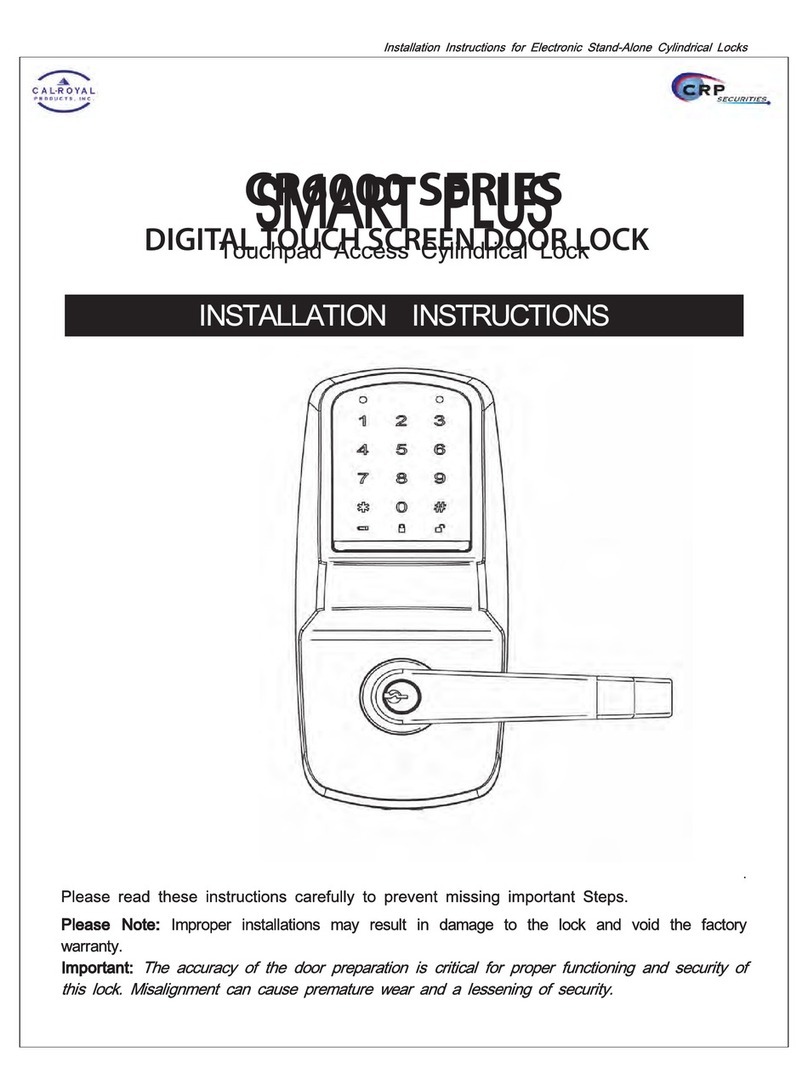
Cal-Royal
Cal-Royal CR6000 SERIES installation instructions
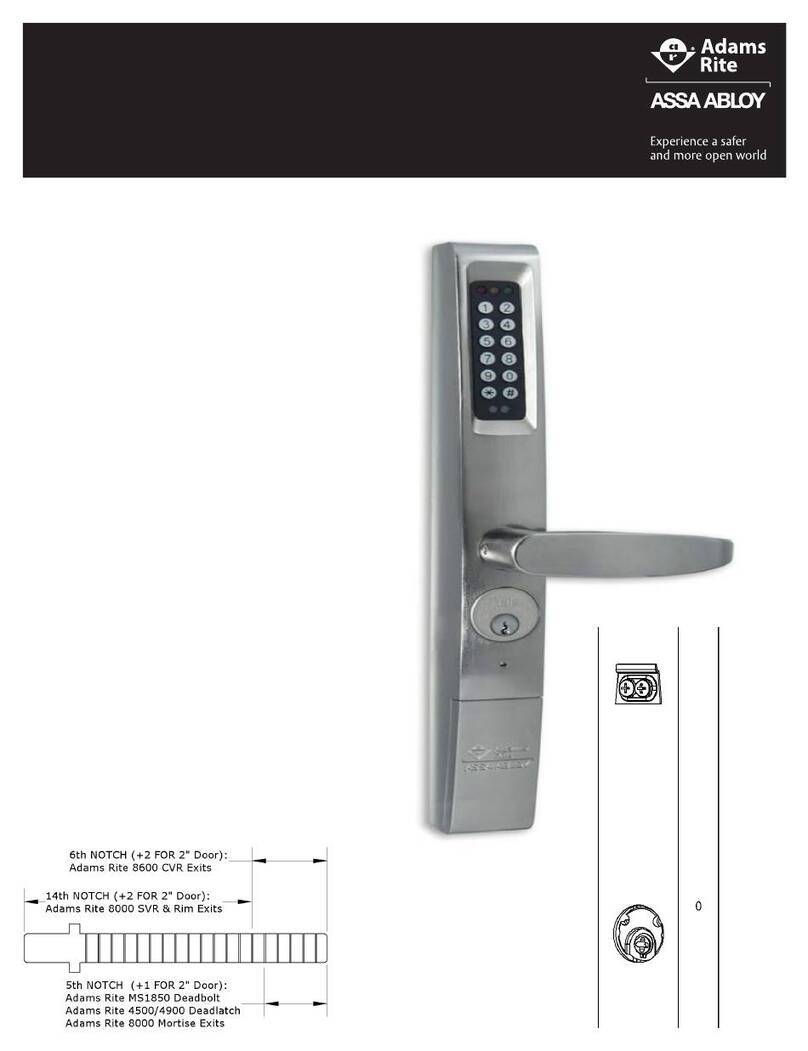
Assa Abloy
Assa Abloy 3090 Installation instructions and user guide
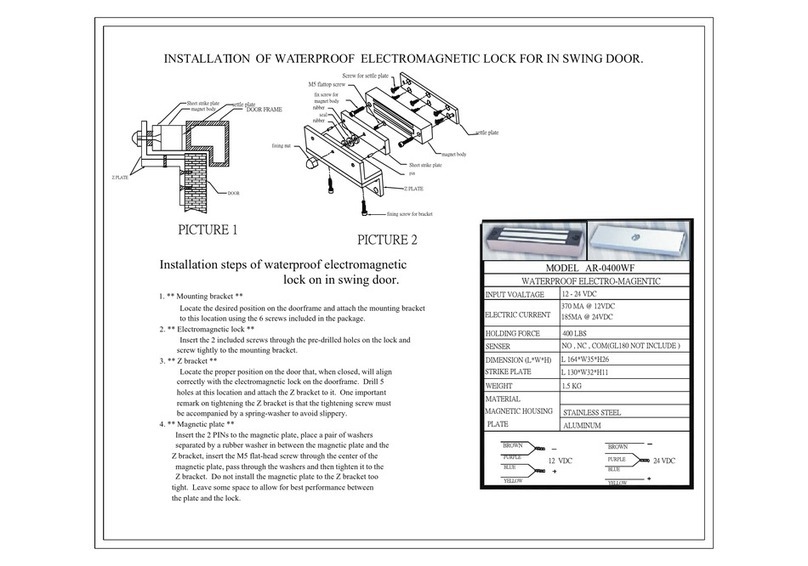
Soyal
Soyal AR-0400WF installation instructions

Z-Wave
Z-Wave GKDL-5000Z Specification manual

RemoteLock
RemoteLock 600 Series Hardware installation

Armstrong
Armstrong SDWP-001 user manual

Kwikset
Kwikset 62822/01 installation guide

Richelieu
Richelieu 701SQ32R36 Series manual
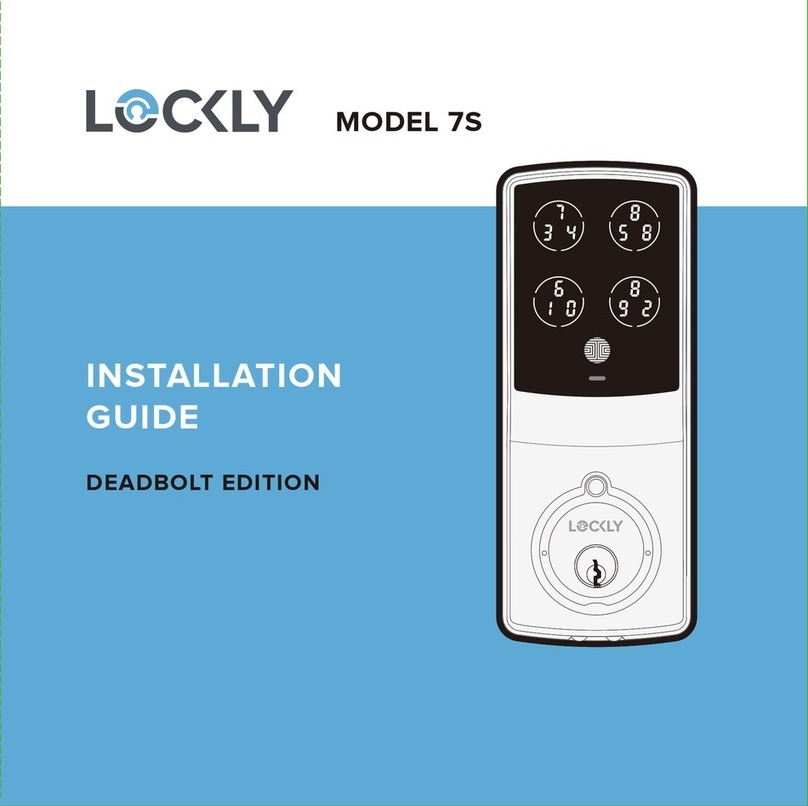
Lockly
Lockly DEADBOLT EDITION 7S installation guide

Assa Abloy
Assa Abloy Lockwood Onyx 9A1A2/5PBLK installation instructions

Assa Abloy
Assa Abloy Valencia Bella user manual
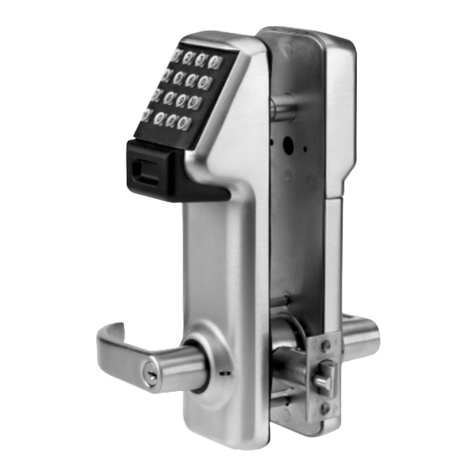
MARKS USA
MARKS USA i Que PROX Series Programming guide
